Living and Learning in Málaga, Year 2—Otra Vez Madrid
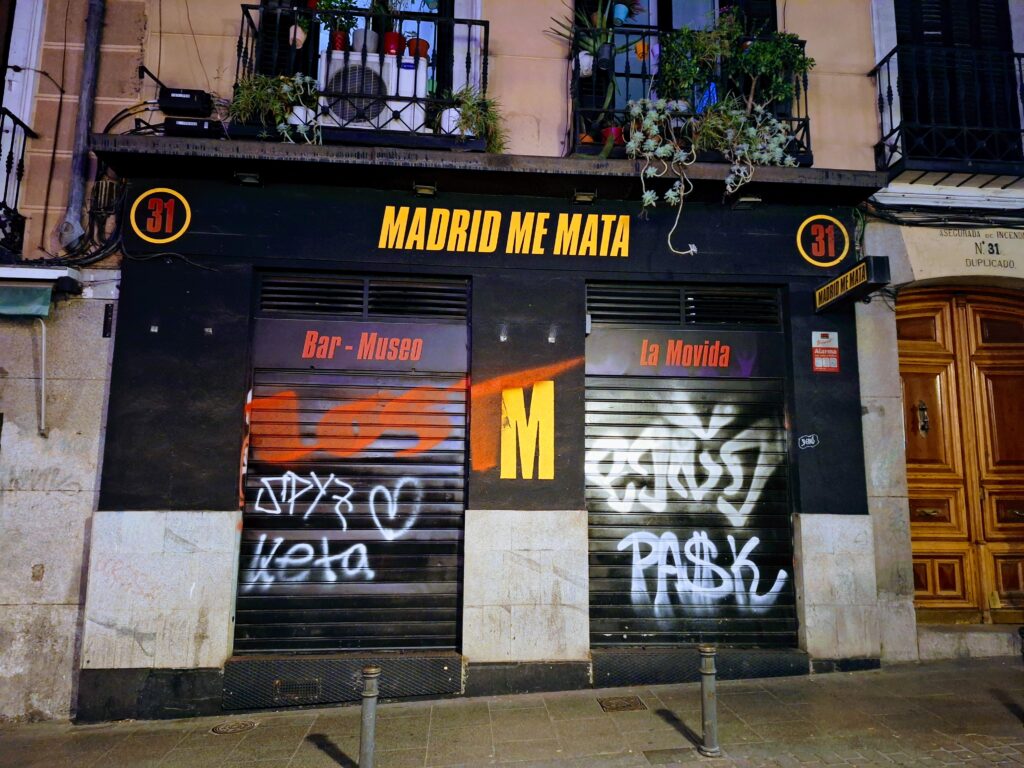
January meant another trip to magical Madrid where I spent time with my friend Miguel, whom I first met in Málaga at the now-defunct writers meetup. With a Dutch father and Spanish mother, Miguel grew up in the Netherlands speaking three languages. He’s very much at home in Spain, is well-versed in Spanish history and culture, and loves living in Madrid. He has always expected me to speak Spanish when we’re together which can be challenging because he and I disagree on a lot and I’m at a disadvantage when trying to explain my position on a topic. But he’s been very helpful in expanding my lexicon with handy phrases. For instance, when I told him eso no es el punto in response to a comment he made, he offered an alternative phrase: de eso no se trata. He’s also a barometer of my progress in Spanish. I hadn’t seen him since June last year when I was in Madrid for the Feria del Libro. When we met for lunch on a Sunday this January, he commented on how much I had improved. Ever reluctant to accept a compliment on my Spanish I shrugged it off, knowing that at some point—two days later, in fact —my brain would tire, my tongue would falter, and I would be reduced to balbuceos, prompting him to ask, “What happened to your Spanish?”
But that Sunday, lubricated by just the right amount of wine at lunch, I was delivering opinions and asking questions with semi-relative ease. Later we went to a flamenco show, vibrant with color and movement to fiery music laced with melancholy, all of which afterwards necessitated some reflective conversation at a tiny bar called Hemingway, a place the writer had never visited since the bar is only a few months old. We were the only customers, and we pontificated freely on the merits and demerits of the man himself, though we probably made up a lot of stuff. To continue the Hemingway theme, we made our way to Gran Via to Museo Chicote, the posh bar Hemingway did frequent as a reporter during the Spanish Civil War. His photo hangs there along with photos of the other famosos who visited the bar, among them American movie icons Ava Gardner and Frank Sinatra as well as Spanish philosopher Jose Oretga y Gasset and filmmaker Luis Buñuel.
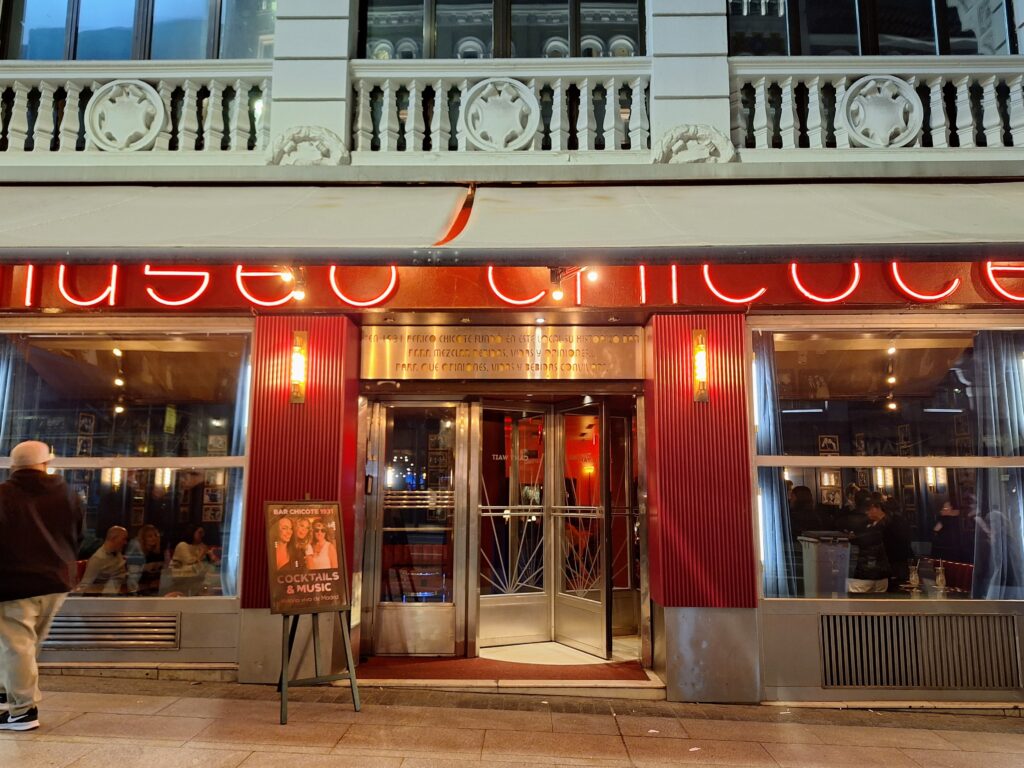
The thirties décor includes an old-fashioned telephone booth, in which a private detective or spy or a dirt-digging reporter might speak surreptitiously. Miguel, a fan of the noir novel and a writer of one himself, demonstrates in this photo.
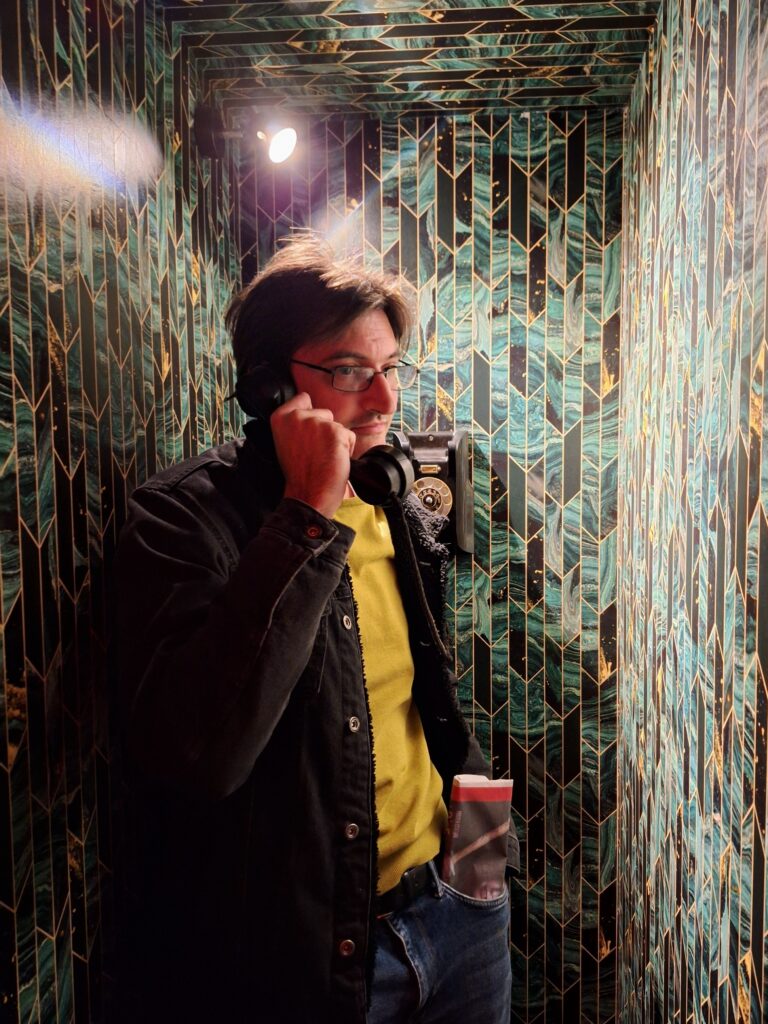
Two days later we were at the Biblioteca Nacional where I wanted to see the special exhibits. After our evening of Hemingway and the mythification of the white male writer, it was the afternoon of the recuperation and restoration of formidably talented women whose lives and works had been erased by a dictator’s need to exercise control over ideas, rights, and women. Sound familiar, Trump America? The exhibit on Carmen de Burgos traced her many accomplishments as journalist, essayist, novelist, and feminist leader, and her impact in Spain, Latin America, and elsewhere. She died in 1932 during the brief years of the Second Republic which collapsed with its defeat by the Nationalists. The ensuing Franco dictatorship banned the name and works of Carmen de Burgos.
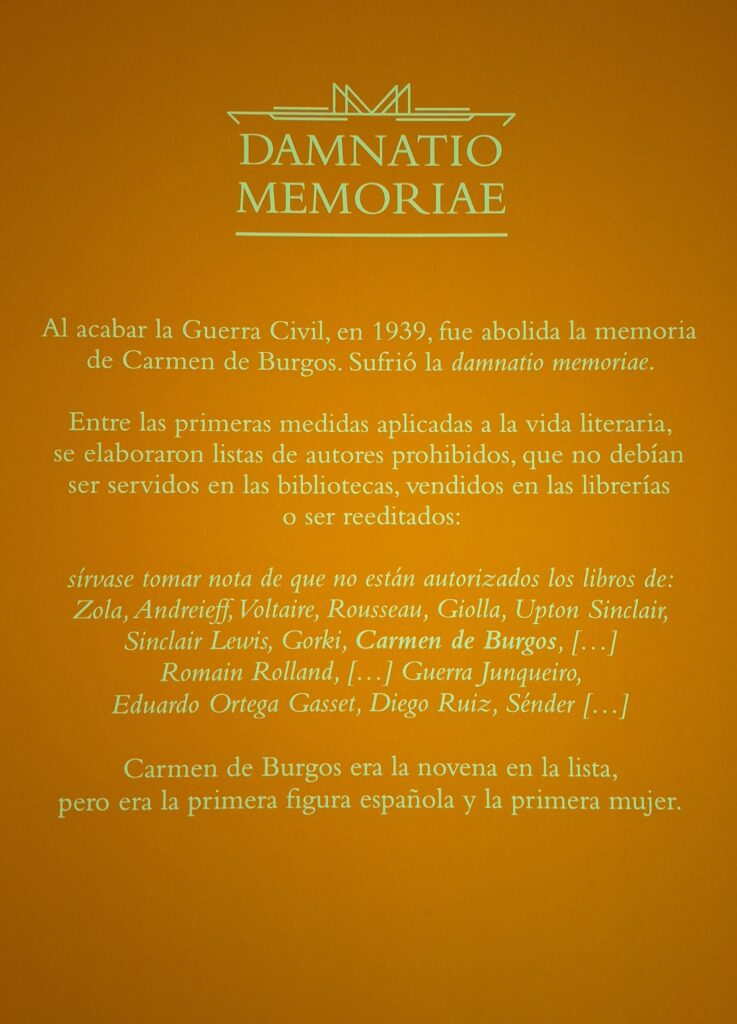
The exhibit about María Lejárraga was titled Una Voz en La Sombra (1874-1974). She, like Carmen de Burgos, was a prolific writer in multiple genres, a translator, a feminist, an activist, and an exile during the Spanish Civil War who never returned to her home country. While she collaborated with her husband on many projects, these, and many of those she wrote on her own, bore only his name since her family disapproved of her openly claiming her work. She was elected to Congress as a member of the Socialist Party in 1933, was sent to Switzerland by the Republican government at the start of the Spanish Civil War and thereafter lived in exile, dying in poverty in Buenos Aires at the age of 99. Her voice, once in the shadows as the exhibit title references, is once again rightfully celebrated for her contributions to literature and politics.
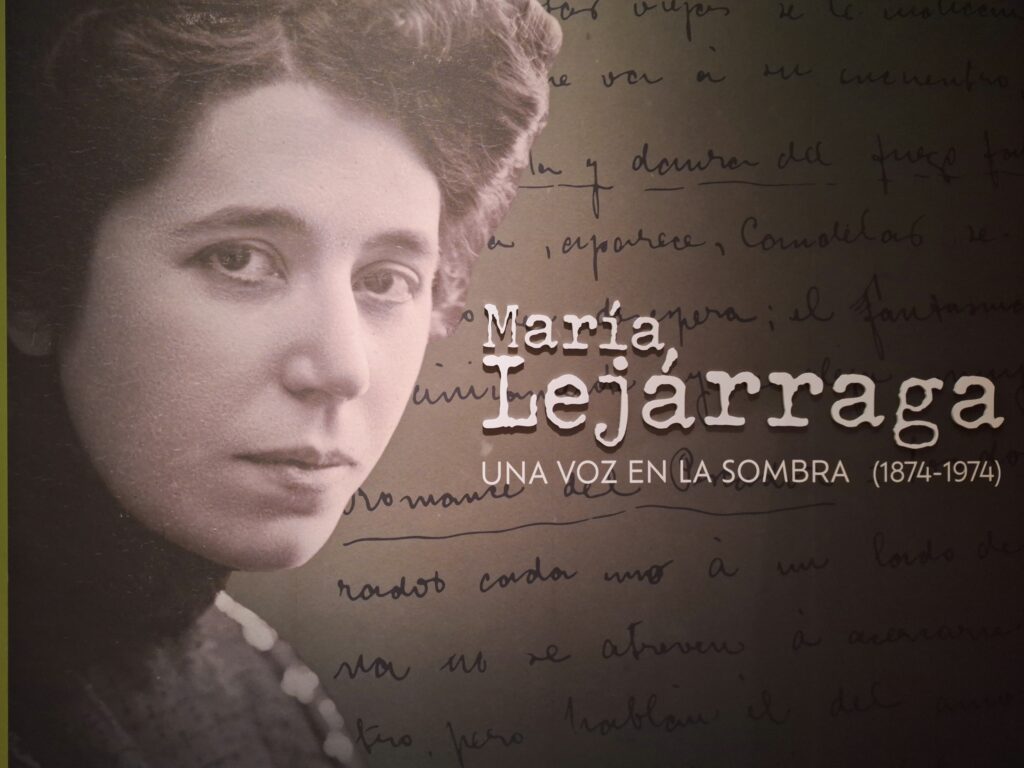
Later that day, we met up with luminous Kat who had come up from Málaga for her first visit to Madrid. Originally from Philly, Kat moved to Málaga a year ago following ten years working in Nairobi. After a drink on the roof of the Círculo de Bellas Artes with spectacular views of the city, we headed to a taberna for tapas followed by barhopping in the Malasaña neighborhood.
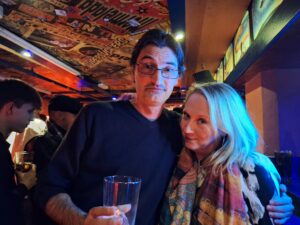 After two bars, I called it a night, leaving the much younger Kat and Miguel to live out the rallying cries of the Movida Madrileña of the late 70s and 80s.
After two bars, I called it a night, leaving the much younger Kat and Miguel to live out the rallying cries of the Movida Madrileña of the late 70s and 80s.
Madrid nunca duerme/Madrid never sleeps
Madrid me mata/Madrid kills me
These rallying cries were an awakening to creative possibilities and a furious energy to achieve them. La Movida was a cultural movement that sought a new identity for post-Franco Spain. Will the US have such a movement after a regressive and repressive Trump regime?
Back in Málaga, I attended a writing workshop led by a pair of writers from the nearby town of Benalmádena. They and members of their writing group and previous workshop participants came to Málaga for a discussion of and inspiration from the temporary exhibit at the Museo Carmen Thyssen called Desnudos, depictions of the human form spanning a century (1870-1970). The painting I chose as a writing prompt is called Arquera by Rafael Pellicer. I was captivated by the arrow clasped in the woman’s teeth like a rose, her steely look, and the bow across her thigh as if she could decide at any moment to crack that thing in half. Pellicer painted it in 1935. Later, during the Franco years, Pellicer’s work took a religious turn.
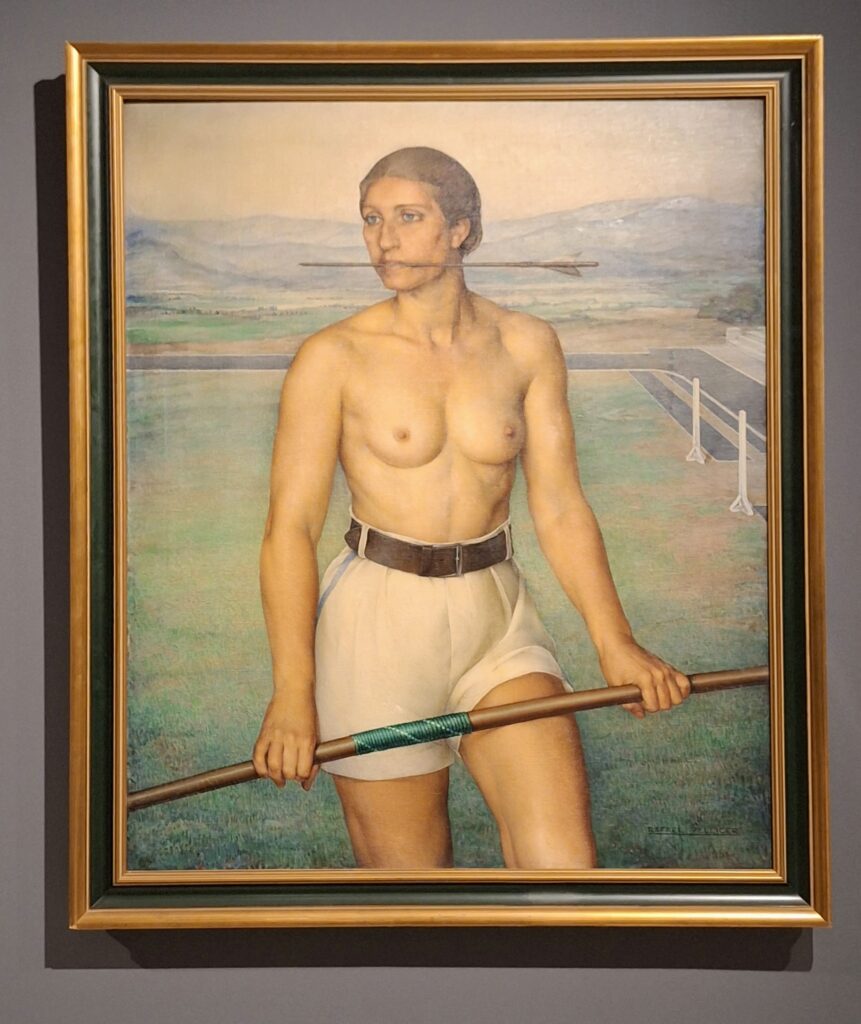
To help expand my thinking, reading, and speaking in Spanish, I recently joined a Club de Lectura facilitated by a local Spanish teacher. So far, we have read and discussed stories by Gabriel Garcia Marquez and Isabel Allende. Our next story is by Almudena Grandes, a much-loved Spanish writer whose first novel was inspired by her experiences in the Movida Madrileña. She also wrote a series of novels about the anti-Franco resistance.
Every day I am grateful for my life in Spain where I constantly learn something new— about art and literature, about history, and about the language I’m learning. And I’m lucky to be doing it away from a country that now devalues and threatens the lives and well-being of any segment of the population that is not straight, white, and male. Tell me what’s great about a country that denies the humanity of so many of its people.
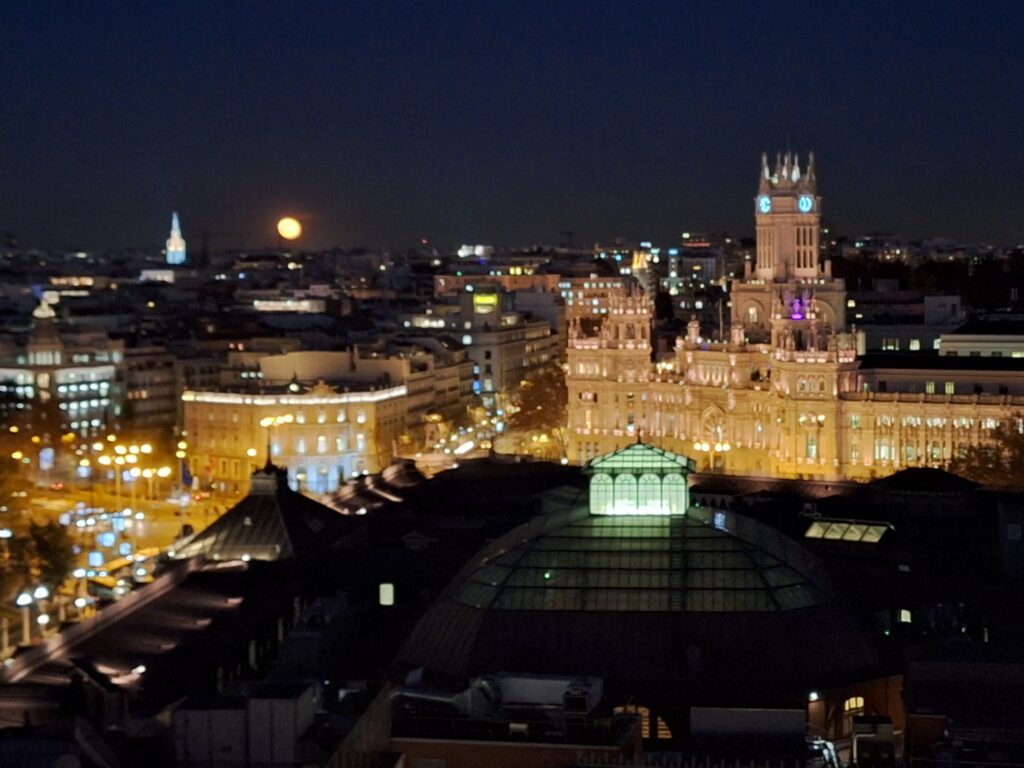
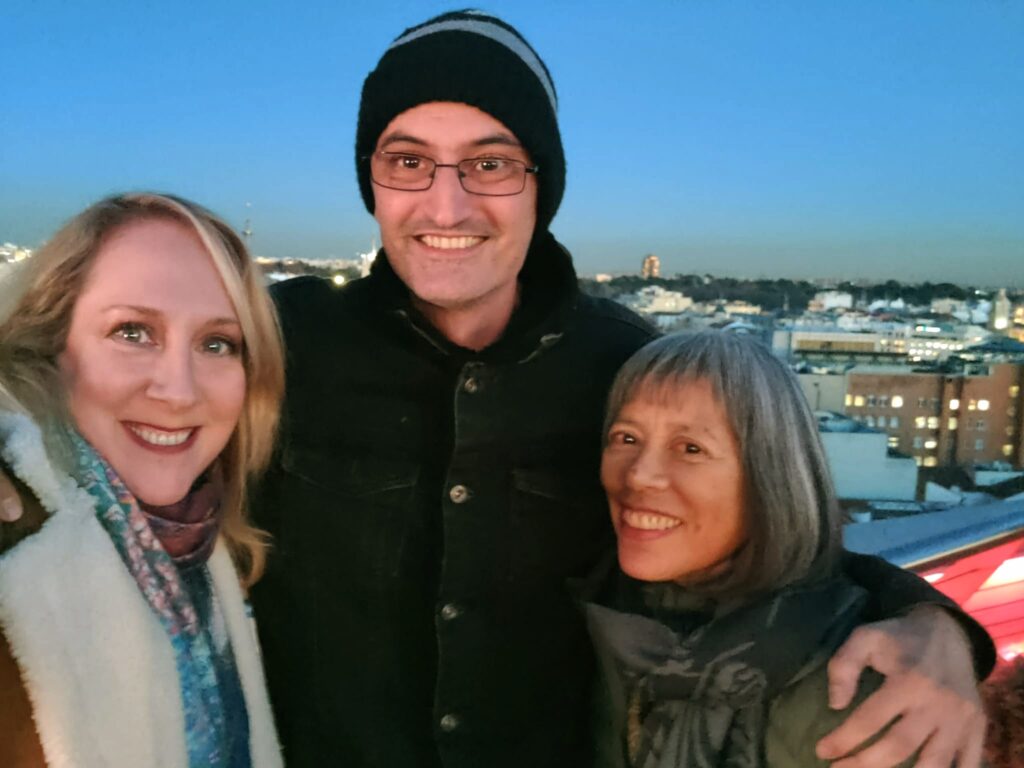
Thank you for sharing your enlightening and stimulating experiences in Spain!
Thanks, Joyce, for reading the blog!
Wow, just wow, what a life you are leading. Love the painting by Pellicer! That was a great museum.
Yeah, I love that museum. And the café offers a great menú del dia.